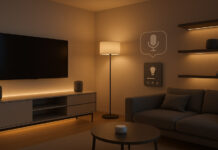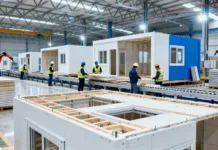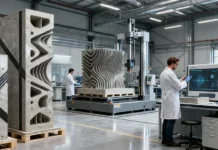The size of the AC is not usually the biggest concern for most consumers interested in installing a new air conditioner system or those doing replacements. Many homeowners only focus on the product’s cost. As much as we’ve become accustomed to emphasizing the price, it’s a good idea to consider the HVAC system’s size.
It’s impossible to do away with air conditioning. HVAC systems play the essential role of cooling and heating our indoor spaces. They also help maintain healthy air quality in confined locations. But, selecting an ideal system is arguably one of the most challenging decisions you’ll ever make for your home. HVAC systems come in all shapes, colors, and sizes.
If you select an oversized system, you will likely experience issues like accelerated wear and tear and inefficiency all the time. Oversized products are also susceptible to dehumidification problems. On the other hand, A small system may be incapable of regulating your indoor space’s heating and cooling fully. Do not attempt to go it alone. Instead, consult with a certified HVAC technician to get an energy-efficient unit that will serve you happily for years.
This guide will walk you through the process of calculating the appropriate size of the HVAC unit you need. The guide is ideal for consumers looking to buy the right-sized systems for their homes, offices, or use in commercial spaces.
Measuring your Spaces
The first step involves doing some calculations. Start by measuring your floor space using a standard tape measure. Or, exact this figure from your house’s blueprints. Note the square footage of your home’s sitting room, bedrooms, kitchen, and hallways. Add these measurements.
Calculate Base BTU
The next step is to calculate the base BTU. BTU, or the British Thermal Unit, denotes the energy required to cool or heat a square foot. 25 BTUs are needed to cool or heat an indoor space per square foot. Therefore, to get your home’s BTU rating, multiply the total square footage of your house by 25.
Consider the Ceilings
Thirdly, you should factor in your building’s ceiling heights. If you have ceilings rising over 8 feet, you multiply the BTU by 25% to get your accurate score.
Finally, use the findings to determine the correct size of the HVAC unit for your indoor spaces. To do so, divide the BTUs by 12,000 to determine your required tonnage – one ton is equivalent to 12,000 BTUs.
Case Example
For example, a 3,000-square-foot indoor space would have 75,000 BTUs. Such a space would require an air conditioner of about 6 tons (75,000 BTUs divided by 12,000).
Detailed Calculations
Alternatively, you can factor in additional variables to accurately measure your property’s HVAC demands. Professional HVAC technicians often account for concerns such as:
- The number of people occupying these indoor spaces
- The number and design of your windows
- The area’s climate
- The building’s lighting
- The insulation used on the walls
This approach allows the experts to find appropriately sized air conditioner for your home or office.
Load Calculator
According to teamemergencyplumber.com, It’s always advisable to leave the experts to calculate your building’s energy load capacities. Yes, you’ll pay a fee for their services, but this investment will be worth every penny. The experts use the load calculator to determine your property’s precise energy measurements. This tool comes configured to account for a wide range of determining factors like the climate, direction the windows face, square footage of your home, lighting, wall insulation type, and many more essential variables.
Heating and Cooling Loads
HVAC contractors base their energy load measurements on three main factors. They consider the energy needed to cool or heat the indoor space. They look at the three different heating and cooling loads. And finally, they analyze how the load types relate to the HVAC system’s capabilities. The size of the system needed to cool or heat your spaces depends on the three load types:
- Design load
- Extreme load
- Partial load
Design load
This load type defines your house’s insulation type, orientation, energy efficiency rating, and overall layout. The lower the design load, the more energy efficient the space. Expert HVAC installers often use this design load to specify the appropriately sized HVAC unit.
Extreme Load
This load measures the difference between an area’s hottest and coldest temperature variation. The extreme load is not as powerful a determinant of the right HVAC products as the design load.
Partial Load
This load type occurs when the system operates between extreme load and design load modes. Partial load causes the equipment to malfunction. It turns the machine on and off intermittently, leading to energy waste and humidity problems indoor.
Many ACs and furnaces have a built-in feature to solve such partial load inconsistencies. They include a speed-varying component that allows the HVAC system to operate normally while in this loading mode.
Why You Should Seek Professional Help?
Finding the correct energy measurements for your home is a complicated process. The wrong AC at your business may end up costing your reputation and customers. Installing the faulty product may compromise indoor air quality, leading to diseases.
Avoid such costly mistakes. Hire an experienced HVAC professional to help you figure out the perfect sizes of ACs and furnace systems for your home. These experts understand all too well that each indoor space is unique, so everyone needs a customized plan. Therefore, there’s a need to pay attention to minute details to devise an optimal solution for your heating and cooling requirements.
Key Takeaways
Do not be among the millions of homeowners who continue to pay the ultimate price for installing oversized or undersized furnaces, heat pumps, and AC systems. Oversized systems waste energy, which drives up utility bills. Systems that are too small cause dehumidification problems. The latter issue can cause irreversible damage to your furniture, walls, or other personal belongings.
Oversized and undersized systems give rise to energy inefficiencies that end up costing you more money in utility bills. Selecting the right size air conditioner takes time and requires professional input. Get it right, save hundreds or even thousands of dollars, and live a happy life!
































